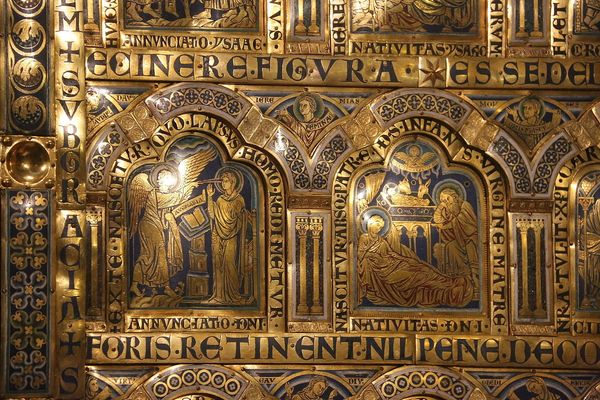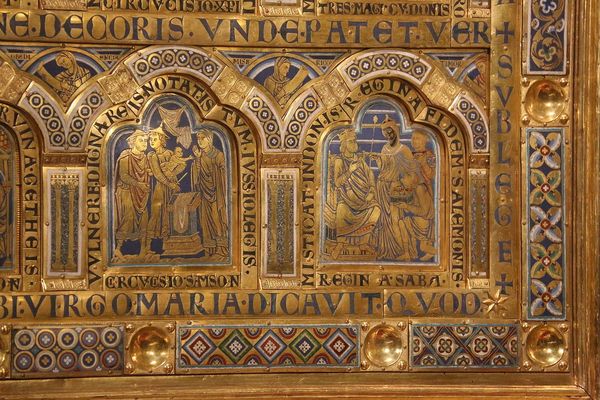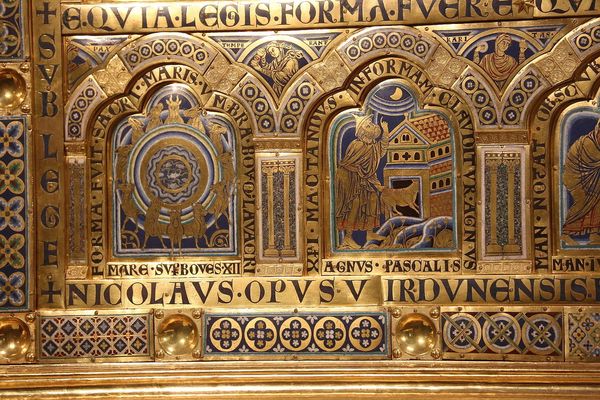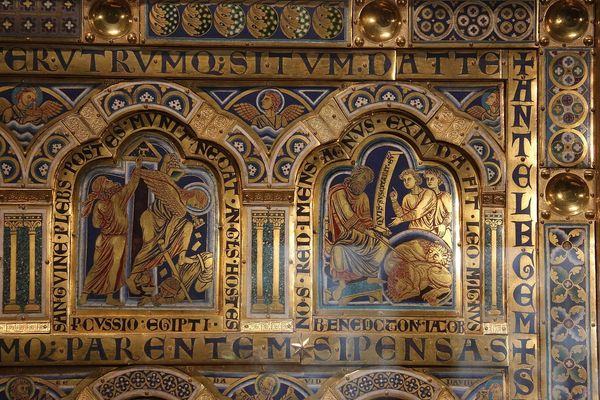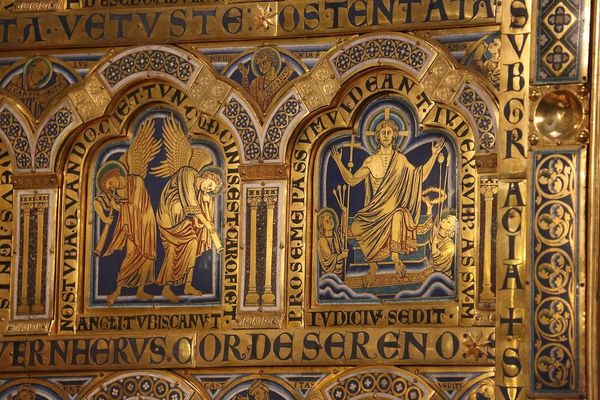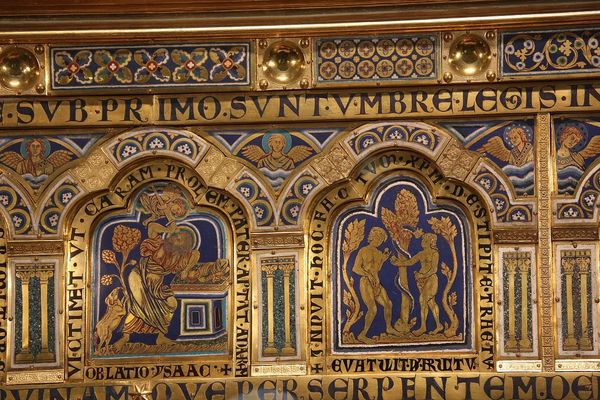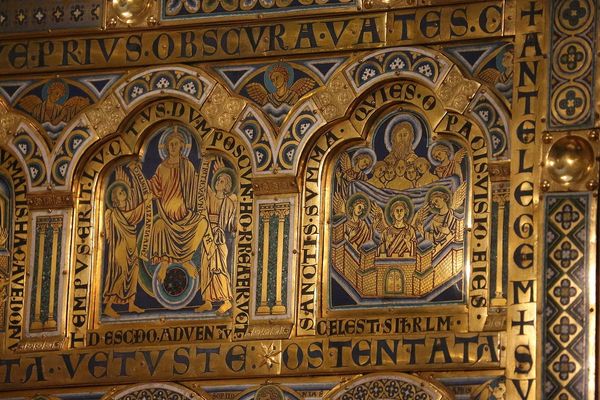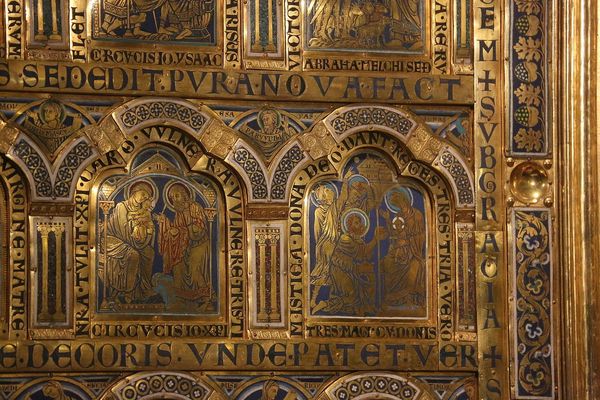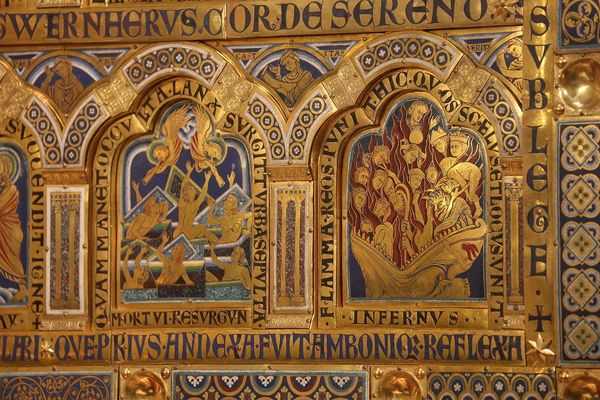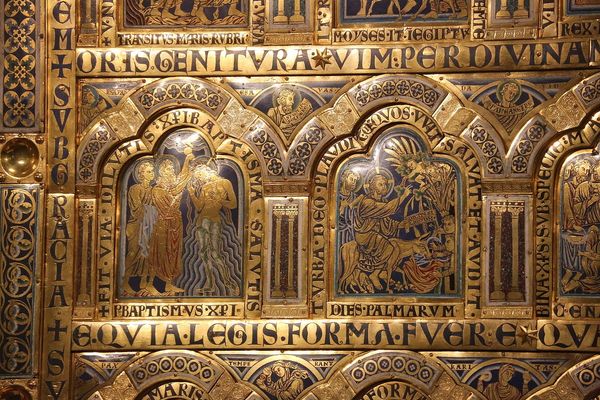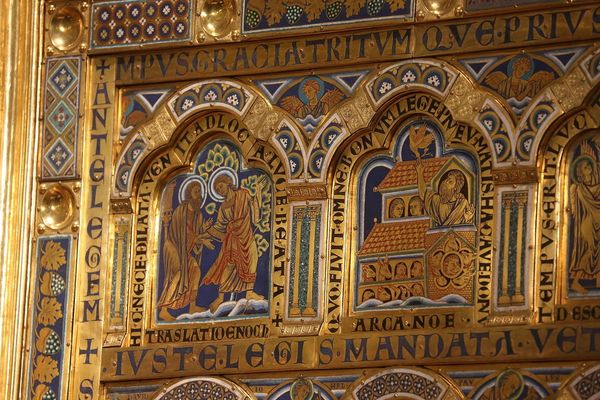
carving, metal, gold, relief
#
byzantine-art
#
medieval
#
carving
#
metal
#
gold
#
relief
#
holy-places
#
historic architecture
#
traditional architecture
#
islamic-art
Copyright: Public domain
The Klosterneuburg Altar, made of gilded copper and enamel around 1181 in Austria, is a potent example of medieval religious art deeply enmeshed with the political and cultural currents of its time. Envisioned by Nicholas of Verdun, the altar isn't just a devotional object; it's a systematic theological statement that presents parallels between the Old and New Testaments. Its imagery is not just illustrative; it's argumentative. In a period where the Church sought to consolidate its authority, such visual programs served to instruct the faithful and reinforce established doctrines. To fully grasp this piece, one must delve into the history of the Augustinian monastery that housed it, as well as the evolving role of religious art in the medieval period. By examining illuminated manuscripts, theological treatises, and monastic records, we can decode the visual codes embedded in this altar. This unveils its role as a powerful tool in shaping religious and social consciousness during the High Middle Ages.
Comments
No comments
Be the first to comment and join the conversation on the ultimate creative platform.
